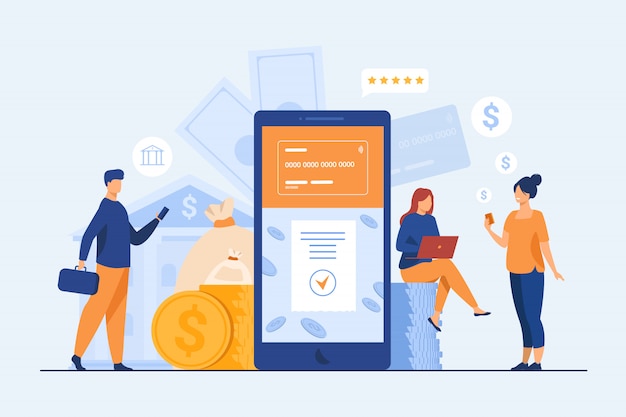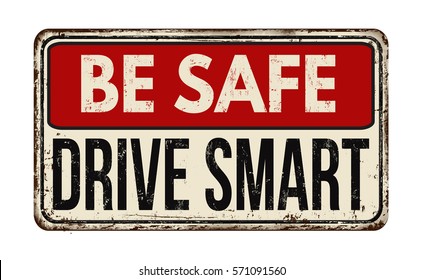Breaking the trance: how I escaped IDEO’s biased career labyrinth

When IDEO posted their June 2020 IDEO diversity, equity, and inclusion commitments, it triggered old workplace trauma for me. Reading George Aye’s article, I was devastated to learn that IDEO culture hasn’t improved since my day.
While I experienced many of the positive aspects of IDEO as a design engineer and project leader from 2001–2010, I also left heartbroken. I decided to share my story now in hopes that it might help some of you who are experiencing similar workplace trauma. By understanding the system in which you work, there is hope that you too may break the IDEO trance.
“We cannot dismantle a system unless we understand how it was designed (intentionally and unintentionally).”
— Tania Annaissie in A Design Thinker Reckons with Design Thinking
Enter the Labyrinth
The best metaphor to describe my experience at IDEO is a labyrinth. Similar to Sarah in Jim Henson’s 1986 film, Labyrinth, I was made to navigate a confusing and ever-changing set of unpredictable obstacles created by a patriarchal system in order to attain my goal. My white, male colleagues also encountered obstacles, but somehow my route always seemed to be longer and more arduous. Over my time there, my career came slowly to a halt, a feeling like death by a 1000 paper cuts — or sticky note cuts, the more popular office supply at IDEO.
In the end, I broke the trance IDEO had placed on me and escaped the labyrinth. In the process, I had to come to grips with the fact that IDEO leadership perpetuates a harmful system of patriarchy. Observing the plight of colleagues, I learned white supremacy, ableism, and ageism are also alive and well at IDEO.
Without support for diverse perspectives, IDEO can’t competently design for most people. Only a diverse team can truly design for a diverse world.
I wanted to work with friends to design our future world
For those who are not familiar, IDEO is the global design consultancy behind some of the most iconic product innovations we know and use today, from their contributions to the first Apple mouse to the soft-handled Oral B toothbrush. The design industry, Fortune 500 executives, and media journalists have repeatedly honored IDEO as one of the most innovative companies in the world.
I was hooked when I heard IDEO’s cofounder, David Kelley, explain the power of design:
“The only thing that’s not designed by somebody is nature. So the trees are not designed by us, but everything you see, everything you see, every light fitting, every flower vase, every scale, every stand for fruit, everything is designed, has to go through this kind of process.”
I also identified with David Kelley’s motivation for creating IDEO:
“I had an intuition I couldn’t survive corporate America,” Kelley says. “I hated the hierarchy and just wanted to work with my friends.”
Over eight years at IDEO, I had the opportunity to improve the injection experience for people with diabetes; imagine and design new home storage solutions; and find a way to modify a mechanism to enable a child-friendly injection experience for kids with growth hormone deficiency. I traveled around the country and the world, visiting homes and businesses and learning from a wide range of people. Through all of that, I made some incredible friends who helped me hang up my ugly, purple hammock chair; dressed me in a strange thrift store outfit as part of a voluntary office bonding activity; and traveled to the far corners of the Earth with me in search of that special spark of inspiration.
Molehills become mountains
Even amidst the incredible opportunities for creativity and friendship, I felt a lot of frustration working at IDEO. It was initially hard to understand what I was experiencing, but small injustices ultimately became profound losses that I will illustrate later in the story.
For multiple of my early years, I worked with an engineering leader who focused on my weaknesses instead of building on my strengths. Though he was an exacting taskmaster with my male engineering colleagues as well, he also celebrated their accomplishments. When I performed well, he seemed to take it as an affront to his engineering talent. Despite having an approachable location leadership team, I didn’t have the words to explain it to them. My self-confidence as an engineer was crumbling. After a year of unsuccessful requests to change projects, I finally refused to do a follow-on project for a lovely client because it involved continuing to work with this leader. The client brought the project to a competitor stating that they weren’t satisfied working on that project with any other IDEO engineer but me.
I joined a team of men working on a blood self-testing kit. Their user research focused primarily on men. The leading concept was designed to be used while sitting on a public toilet. I explained that the majority of women would never sit on a public toilet. They did not adjust the design and continued using the public restroom story to illustrate its use, a scenario that does not apply to most of the world. There was no appreciation for my lived experience.
Another time, I remember a brainstorming session where I resorted to holding my hand up for 20 minutes, but still, my IDEO colleagues never asked what I had to say. I felt invisible.
On another project, I led the engineering concept work to find three different ways to “re-design only seven parts from an existing injector”. My teammates and I were not listed on the resulting prestigious product design award. I felt erased.
Etc.
IDEO not only marketed world-class design, but the leadership also promoted the idea that this was a different kind of company. And I, and many others, bought it. Though these interactions affected me profoundly, it felt like they would seem very small to anyone else if I complained.
To try to understand what was happening to me, I started reading authors who study gender in the workplace. In particular, Dr. Alice Eagli’s and Dr. Linda Carli’s work was helpful in framing my experience. It describes women’s progress through the workplace as a labyrinth where women encounter many more obstacles than men. Through reading this research, I realized that I had to navigate more twists and turns in the IDEO maze compared to my white, male colleagues. Psychologist Dr. Virginia Valian sums it up well:
Any single instance of bias is likely to be tiny, and someone might say, you’re making a mountain out of a molehill. But mountains are molehills piled one on top of the other.
— Dr. Virginia Valian
Only a very sick culture could make so many talented people feel so small
When a series of women and people of color were terminated during my last several years at IDEO, it finally pushed me to seek change. There may have also been white men who were terminated, but who didn’t confide in me, so I didn’t know they were terminated. Nevertheless, the way these people were treated affected me profoundly.
A talented woman I was working with on a project was terminated with no notice on a Friday afternoon. I found out when she texted me from home that day. She remembers the leadership saying, “you do good work, but you just don’t fit here.” Another female colleague confessed her work life was so stressful that, when she was walking over a tall bridge during an IDEO business trip, she scared herself with serious thoughts of how it would be easier to jump than to figure out a way to continue to live. They terminated her employment several years later.
These are only some of the stories I witnessed. Other people I reconnected with couldn’t bear to see their story in print, even anonymously. All of the colleagues I spoke with this year now have decades of experience working outside of IDEO. When I touched base with them, they expressed never feeling so low as during their termination from IDEO. All of them mentioned anxiety or depression due to the working environment at IDEO. Multiple mentioned feeling suicidal. Multiple. Only a very sick culture could make so many talented people feel so small.
But, as David Kelley demonstrates, the IDEO founders are proud of the culture they created.
From David Kelley: “I am most proud of the culture of the place. When I started the firm that would eventually become IDEO, all I really wanted to do was work with my friends on cool projects. I dreamed of a life that was like summer break from college all the time for me and my pals.”
Screenshot from David Kelley’s introduction to the employee manual, The Little Book of IDEO:
David Kelley’s idea of making a company where he could work with his friends took on new meaning. When you don’t consciously design a workplace to include, develop, and support diverse employees, working with your friends can mean promoting primarily people just like you; young, white, cis-male designers without apparent disabilities. Not only does this create a difficult and even soul-crushing work environment for people who don’t match the dominant archetype, but how can a homogenous group competently design for our diverse world?
Based on what I had experienced and observed at IDEO, I believed that my fate would likely be the same as my admirable colleagues; to be terminated for no substantive cause at an unpredictable time due to not fitting the white, male archetype.
No good deed goes unpunished
Since I believed my time at IDEO would be limited, I wanted to use the remaining time to make a positive difference. Crazy as it sounds, I still had love in my heart for the idea of what IDEO could become and the positive impact it could have through design.
In August 2008, with permission from my location lead and the Global Head of Talent and Organization, I led a series of voluntary unconscious bias discussion groups with over forty colleagues at my location. This was additional work that I voluntarily took on in addition to my main job as an engineer and project leader. The discussion groups involved reviewing IDEO’s demographics for the first time and reading two research summaries I created inspired by Dr. Alice Eagly’s and Dr. Linda Carli’s idea that workplaces present a labyrinth of obstacles that keep women from succeeding. FYI — ten years of workplace experiments later, there isn’t clear evidence unconscious bias training is effective, but we didn’t know that at the time.
After leading these discussion groups, the Global Head of Talent and Organization and my location lead (an IDEO partner), said they didn’t need to see any more proof; they were convinced unconscious bias was affecting the IDEO workplace, and change was needed. However, I learned many employees were not convinced that unconscious (or conscious) bias was at play in IDEO. I believed pay equity data would provide the hard evidence that the non-believers in our community needed to understand that bias was affecting our community.
The rest of the story I will share in more detail in a second letter tomorrow. In short, I analyzed IDEO’s pay equity data 2006–2009 with permission from the Global Head of Talent and Organization, and then I was pushed out of the company and did not share the results with anyone. Though IDEO leaders talked about change, I never saw them redesign their systems to better support the variety of people who work at IDEO. In the meantime, my reward for trying to lead IDEO to a more inclusive and more profitable path was to experience additional workplace trauma. Even today, I experience the emot

Migrant abuses continue in Libya. So does EU border training
- A confidential European Union military report calls for continuing a controversial EU program to train and equip Libya’s coast

Hamza Jafri Hits are very hard as like a beast
- Albeit these thoughts absolutely are a beginning, theyve their disadvantages. The cost and worker

US says new intel shows Russia plotting false flag attack
- The U.S. accused the Kremlin on Thursday of an elaborate plot to fabricate an attack by Ukrainian forces that Russia could

Most Amazing And Unique Driving Services 2022
- Utilizing a PDA while driving can be unsafe. Individuals who utilize their cells while driving imperil their own